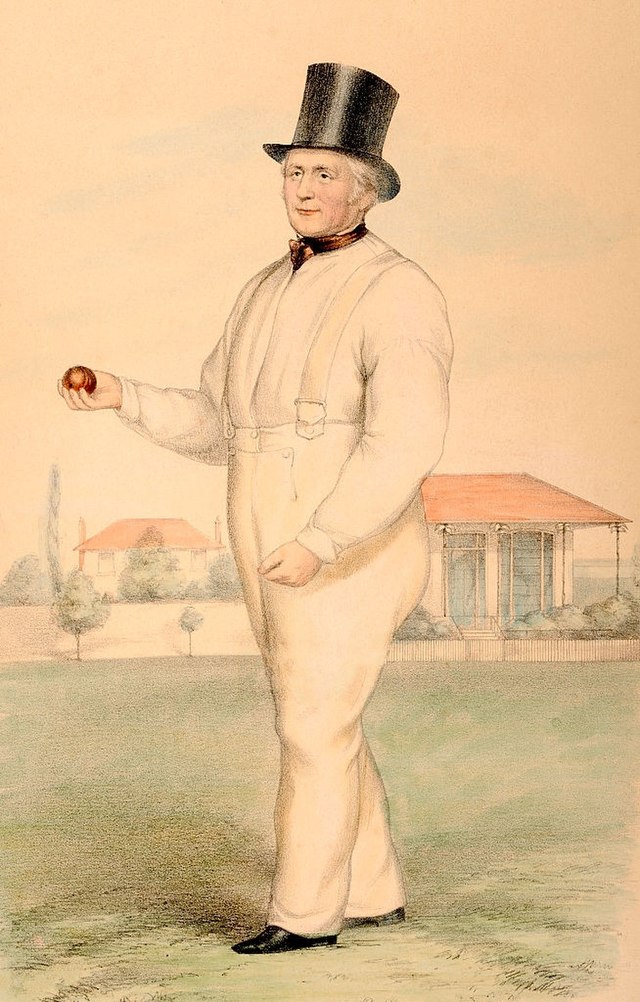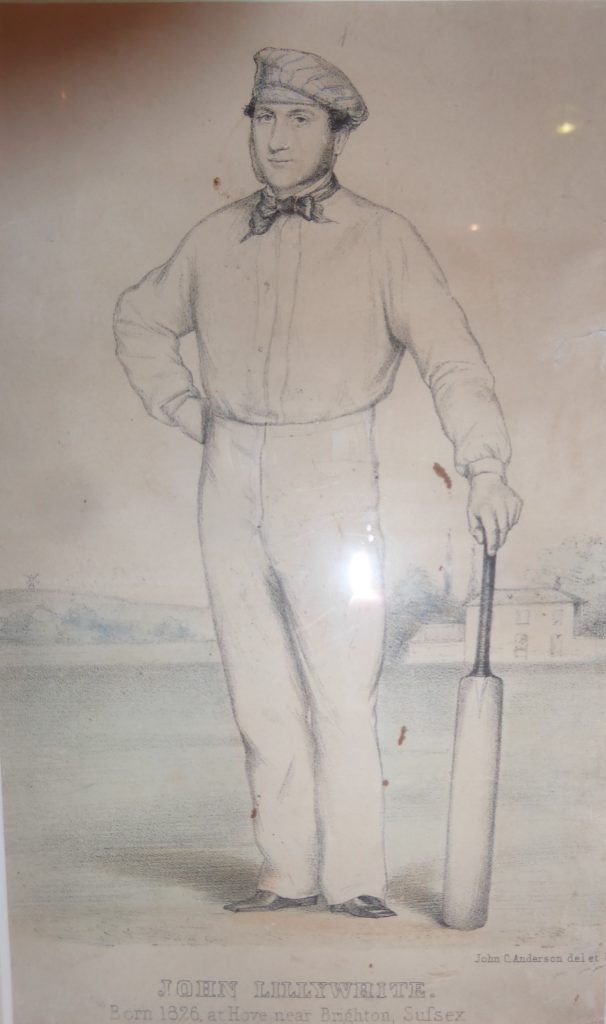‘Old Lilly’
Five members of the Lillywhite family played for Sussex over a period of sixty years. The first member, Frederick William Lillywhite, ‘Old Lilly’, known as the ‘Sussex non-pareil bowler’ was born in 1792 and played for various teams in Sussex before the formation of the county club in 1839.
He was only 5ft 4ins tall and a round arm bowler of great accuracy. He began life as a bricklayer and came to Brighton to take charge of a brickfield.
William first played for Sussex in 1825 and is believed to have introduced round arm bowling to the game, possibly due to an injury to his arm which made underarm bowling difficult. How many wickets he took is difficult to gauge as catches and stumpings were not then registered to the bowler. In 1826 we know he took 16 wickets for Sussex against a Surrey and Hampshire team and twelve years later he took 14 wickets against England. He is believed to have bowled 60 balls to Fuller Pilch without a run being scored and to have bowled him with the 61st. What is certain is that the 474 wickets credited to him in Sussex records are far fewer than those he actually took, as there were additional wickets where the bowler’s name was not recorded.
In 1837 William became lessee of the Royal Sovereign Inn in Preston Street and the Temple Fields cricket ground, in what is now Montpelier Crescent, where he liked to bowl to members with a long stop, often someone like John Wisden. In 1844 he became embroiled in a dispute over leases and moved to London where he joined MCC as a bowler
William later became cricket coach at Winchester College where he worked between 1851 and 1853 before returning to London where he died in 1854. He had three sons. The first, James, was born in Hove in 1825, a medium pace bowler and middle order batsman who played for Sussex between 1850 and 1860. James had moderate success before going on to coach at Eton, Westminster and Cambridge before finishing his career in Cheltenham where he died in 1882.


John and Frederick
John, the second son was born in 1826 in Hove, and played for Sussex between 1850 and 1869. He was the most gifted of William’s sons and was nick named ‘the mud bowler’ on account of his ability to use wet wickets to his advantage. He died in London in 1874.
Frederick, the third son, was born in Hove in 1829, did not reach the standards of his two elder brothers but did achieve fame as a chronicler of the game. He printed scorecards at two hourly intervals in his tent at Sussex matches and was the publisher of ‘Cricket Scores and Biographies’. His ‘Guide to Cricketers’ was well read and became part of Cricketers’ Companion, which was published by his brother John. The books that were published by the Lillywhites did not survive into the c20th but they are an important resource for anyone researching into cricket of the Victorian era.
The most accomplished Lillywhite
Perhaps the most accomplished of the Lillywhites was James Lillywhite junior, a nephew of William. He was born in 1842 and was an outstanding member of the county team between 1862 and 1883, playing as a left handed batsman and a slow left arm bowler. James made his debut for Sussex in 1862 against MCC and Ground at Lord’s taking 5 /28 in the first innings and 9/29 in the second, bowling unchanged throughout both innings. He did this on a further eleven occasions, including three times in consecutive matches in 1873. From 1862 until 1881 James played in every single Sussex match. At the beginning of his career he showed promise as a hard hitting left handed batsman but as his skill as a bowler increased, his batting waned. Exceptionally accurate with an easy round-arm action James pioneered the tactics of keeping the ball on the off-side and cutting it away from the right handed batsman. He was also a very good fielder at either slip or mid-on.
James visited Australia six times the first being in 1873/4 under Dr Grace and the next in 1876/77 when James captained the side in the first two official tests against Australia at Melbourne.
James’ other visits down under were business partnerships with Alfred Shaw and Arthur Shrewsbury. He was also been a member of E. Wilsher’s team to the United States and Canada in 1868.
James’ placid temperament made him an ideal candidate for an umpire and he became a Test umpire even before he had played his last game, officiating in four Tests between England and Australia in 1881/82. He stood again in the second Test in the 1884/5 series but only the once in England, in the Fourth Test against Australia at Old Trafford in 1899 when Arthur Hide stood at the other end.
James died near Chichester in 1929.